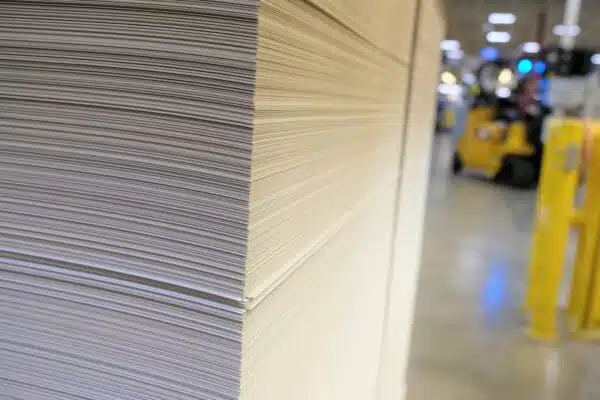Paper curl is a complex issue that may develop into a myriad of end-user difficulties such as print-feed issues on presses and conversion difficulties on cartons. As the majority of paper is composed of fiber, relative humidity changes can cause the fiber to absorb or lose water. Building a stable sheet reduces the effect of this absorption or desorption. There are several influential process factors that contribute to sheet stability, and each play a vital part in building a resistance to curl.
Process Influences on Curl
The sheet’s susceptibility to curl is primarily controlled by reducing the Coefficient of Moisture Expansion (CME) in the paper product. There are several factors that influence CME; however, the primary factors are the sheet’s fiber composition and orientation.

Fiber Composition
The composition of the sheet is an agglomerate of the following conditions: furnish choice, refining types and degree of refining, and fiber length (which may be a combination of the previous conditions). Paperboard made at PaperWorks is composed of three types of furnishes: Top Liner, Filler, and Bottom Liner. The Top and Bottom Liners are the outer two plies, and as such, are the most susceptible to moisture changes in the environment due to being the surface plies. While all three furnishes are controlled to a CSF (Canadian Standard Freeness), refining percentages, and fiber composition, the outer plies are the most important in controlling curl.
With that in mind, the PaperWorks team designed a furnish composition balancing longer fibers (less susceptible to curl), shorter fibers (for improved smoothness and printability), and refining (refining blades designed for fibrillation in addition to slight cutting to control fiber length) to achieve a process-controlled freeness. This freeness determines drainage on the paper machine and is a proven target in comparing the top and bottom ply reaction to humidity differences. All the above variables are documented and monitored closely to ensure repeatability and consistency in our finished product.
Fiber Orientation
Fiber orientation is also an important factor in controlling sheet stability. Orientation of fiber describes the ratio/squareness of the fiber plies aligned in the cross direction as well as the machine direction. On a paper machine, fiber tends to align in the machine direction, just as logs align in the direction of flow on a river. This is controlled by ‘jet-to-wire’ ratio at each ply’s headbox. This ratio is a comparison of the velocity of the furnish slurry exiting the headbox and the speed of the cylinder wire.
Drying
As the sheet is formed through the process, it is exposed to a drying section. This section dries the sheet via conduction to heated cans by flashing off moisture, which is removed through a vapor absorption (VA) system. The sheet is exposed evenly to the cans both on the top and bottom of the to ensure that the moisture is removed in a balanced fashion on both sides. Varying this drying may leave one side of the sheet more susceptible and alter its CME, which may cause the board’s stability to falter.
The tension induced by felt and sheet draws throughout the machine may also affect the squareness, drying capabilities, and moisture removal. The PaperWorks team runs to centerlines for all accompanying tensions to ensure there is no variable or increased internal strain on fibers, which would alter its CME.
Surface Treatment
Treating the surfaces of the paperboard exposes each ply (top and bottom) to moisture; it is therefore important to control each type of treatment. Both chemical treatments (solution and coating) are controlled by a Quality Control System to be manufactured at a repeatable Solids % and Viscosity. The Solids % indicates the amount of material remaining after drying and the viscosity directly influences the ‘pickup’ of each type of material. PaperWorks ensures that the sheet is exposed to a balanced coat weight on both sides and optimizes the sheet’s stability and performance on press.
Lab Test Procedures for Determining Curl, Metrics, and Path Forward
The PaperWorks team utilizes three lab tests to measure for sheet stability post-production: a Taber stiffness, Strip Test and an in-house developed sheet test. The Taber measures MD/CD ratio. The Strip Test measures angle of deflection of samples in both the cross grain and machine direction to ensure the sheet will remain flat regardless of the print-feed direction. The Sheet Test exposes a sheet to TAPPI Standard Conditions (72°F, 50% Relative Humidity) for an extended period to become acclimated, then is hung and measured for deflection distance (in cm.)





